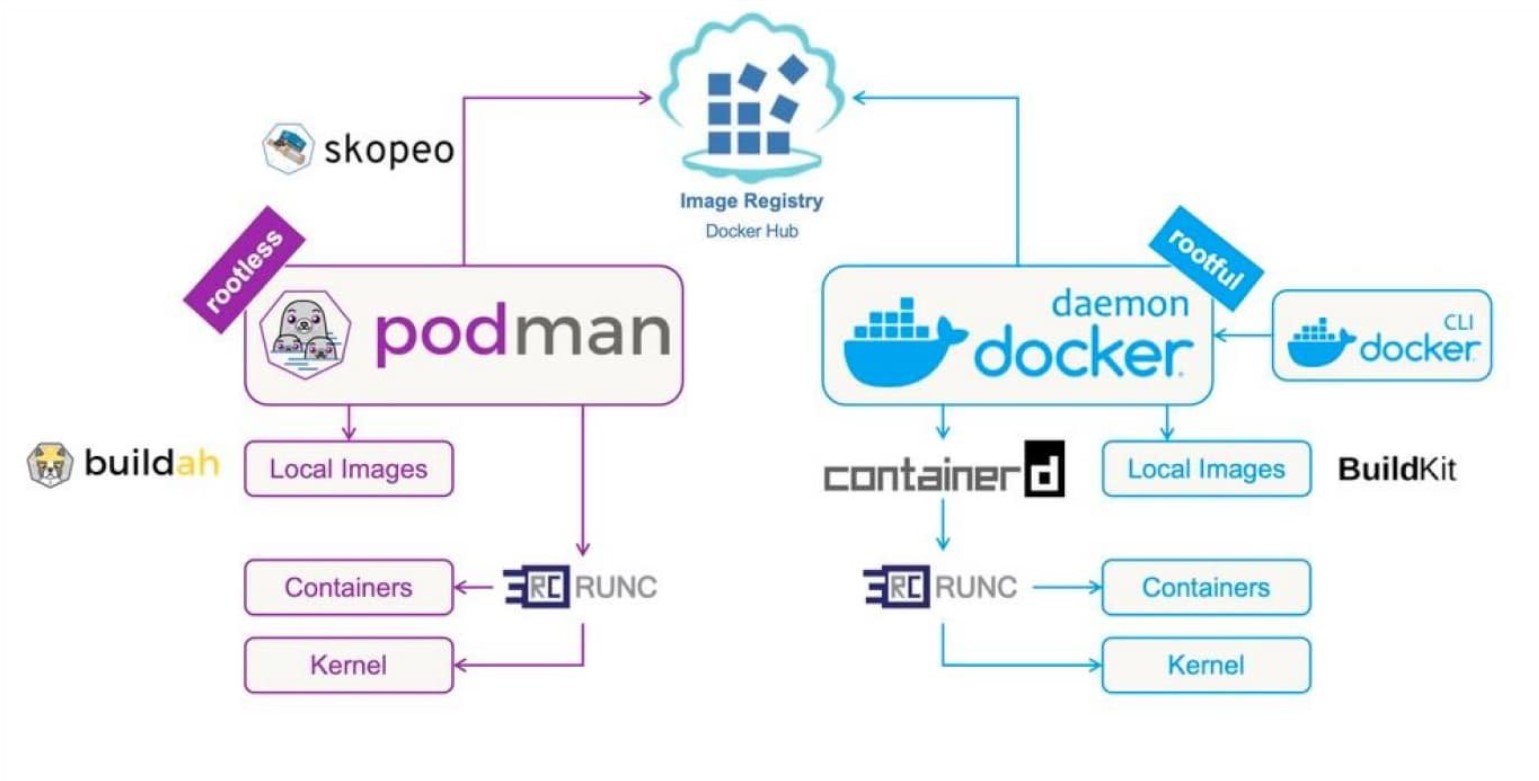
Docker vs Podman: Choosing the Right Container Engine for Your Project
Think of two chefs preparing meals in the same kitchen. One relies on decades of experience, sticking to tried-and-true methods, while the other experiments with newer techniques, promising fresher flavours and more control. Both produce delicious dishes, but depending on your restaurant’s needs, you’d probably lean toward one over the other.
That’s what it feels like when comparing Docker and Podman. Both are powerful container engines, helping developers run applications consistently, but each brings its own flavour, strengths, and quirks.
Docker: The Familiar Classic
Docker is the chef who’s been around for years, setting the standards for how containers are built and run. It made containerisation simple and accessible, giving developers a complete toolkit to build, test, and deploy apps.
Its ecosystem is vast—Docker Hub, countless tutorials, and a global community make it easy for newcomers to get started and for teams to scale confidently. If you want to move quickly and rely on a trusted process, Docker often feels like the safe bet.
That’s why students in a DevOps course in Pune are often introduced to Docker first. Its user-friendly design and popularity provide the perfect entry point into container technology.
Podman: The Modern Challenger
Podman, on the other hand, is the new contender that focuses on transparency and security. Unlike Docker, it doesn’t depend on a central daemon to run. Instead, it follows a daemonless approach, which improves security and reduces risks associated with root privileges.
Even better, Podman is almost command-compatible with Docker, meaning developers can switch without a steep learning curve. It also supports running containers as non-root users—something enterprises appreciate when compliance and security are top priorities.
For teams that want more fine-grained control and a focus on safety, Podman stands out as a serious alternative.
Comparing Features
Although both tools handle containers well, their differences matter in practice:
- Architecture: Docker runs on a daemon; Podman does not.
- Security: Podman offers rootless containers by default.
- Ecosystem: Docker benefits from its marketplace, while Podman integrates deeply with Kubernetes.
- Learning curve: Docker is beginner-friendly, Podman appeals to advanced users.
It’s like two chefs using different cooking methods—both create great meals, but one prioritises speed and accessibility, while the other emphasises precision and safety.
Which One Should You Choose?
Your choice depends on the project’s context. Startups and smaller teams might prefer Docker for its simplicity and massive community support. Enterprises operating in heavily regulated industries may opt for Podman due to its secure, rootless environment.
In many cases, organisations actually use both—Docker for development convenience and Podman for production reliability. The balance allows teams to enjoy the strengths of each.
Hands-on programs, such as a DevOps course in Pune, often guide learners through these real-world scenarios. By testing both engines, students learn how to decide based on project requirements rather than popularity.
Conclusion
Docker and Podman aren’t enemies—they’re different paths to the same goal: reliable, efficient container management. Docker shines for its maturity and community, while Podman attracts those prioritising modern security practices.
The decision isn’t always clear-cut. It’s about what your team values most—speed, safety, or a combination of both. With the right skills, you can confidently choose the container engine that makes your “kitchen” run smoothly, whether you stick with the classic or embrace the modern challenger.
